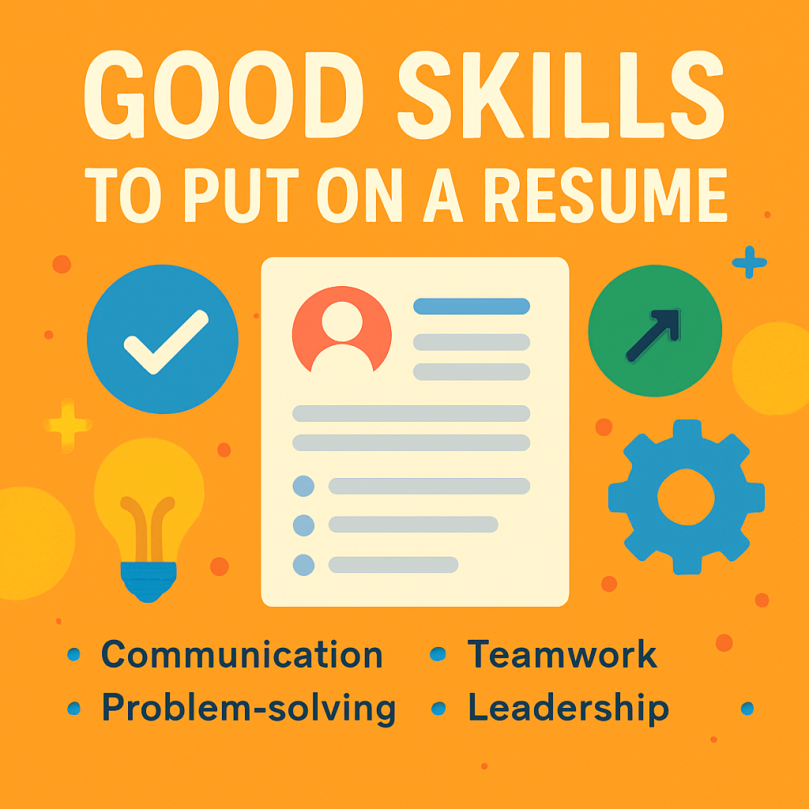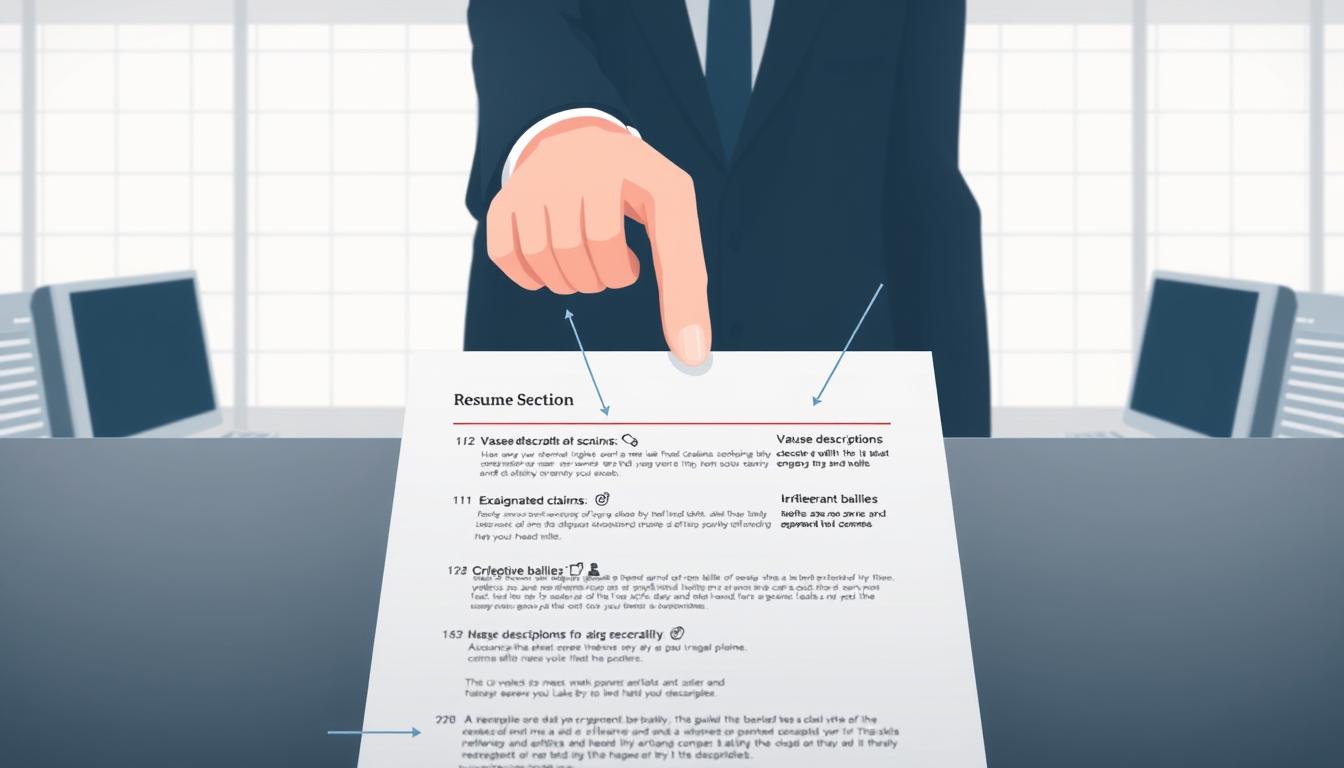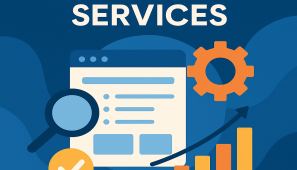Good skills to put on a resume should show both technical expertise and interpersonal strengths so hiring managers can quickly see how you solve problems and work with others. This guide helps you choose a focused mix of hard and soft skills—for example, SQL plus stakeholder communication—that fits the job and makes your resume more compelling to reviewers.
Highlighting the right skills demonstrates your ability to handle complex tasks, adapt to change, and meet what employers want today. Read on for clear examples, concise information, practical ideas for writing each section, and a one-page checklist to tailor your resume and spotlight real experience. Jump to the checklist or FAQs to tailor your resume in 10 minutes.
Many job seekers ask: what are good skills to put on a resume? With choices from data analytics to client relations, it’s easy to feel overwhelmed. Recruiters and hiring managers often scan applications in seconds, so surface 4–6 core skills up front to capture attention—enough to show depth but few enough to be memorable and verifiable. Note your 4–6 now so you can tailor each application quickly.
Why 4–6? It forces prioritization: those top skills become anchors you support with concrete examples in your experience section. Aim for a balanced mix of hard and soft skills so employers can see both technical competence and how you work with others. For example, a marketing role might pair Google Analytics (hard) with stakeholder communication (soft); a product role might pair SQL (hard) with leadership and cross-team collaboration (soft).
How to pick your 4–6 quickly: scan the job posting, copy 3 repeated keywords, then choose 1–3 related skills from your history that you can prove with a metric or short example.
What you’ll get from this guide:
- Clear differences between hard and soft skills and where to list them on your skills resume
- Top skill examples you can adapt for different industries and a plan to map each to the relevant job
- A step-by-step skills resume checklist to tailor each application with attention to detail
Follow the walkthroughs and examples below to turn generic claims into interview-driving evidence that matches the relevant job and what employers want today.
How to Write a Good Resume?
Your resume must grab hiring managers’ attention fast. Start by understanding what each employer wants so your background, achievements, and skills resume section clearly match the role — then run the eight checks below as a short, copyable editing routine.
1. Tailor to the job
Action: Analyze the job posting and mirror 2–3 of the employer’s top keywords in your summary and bullets. Template: “Led 5-member Agile team to deliver product releases on a two‑week cadence.”
2. Clear structure
Action: Use labeled sections (Summary, Experience, Skills, Education) and short bullets so ATS and humans can scan easily. Guideline: keep each role to 4–6 bullets and lead with a quantifiable outcome.
3. Focus on relevant experience
Action: Replace duties with impact statements tied to the target job. Template: “Automated reporting — Reduced monthly prep time 40%.”
4. Professional summary
Action: Write a one- or two-line summary that highlights your top skills and value. Template: “Data analyst | Python • SQL | 5 years — Improved forecast accuracy 15%.” Place 1–2 headline skills here so recruiters and ATS see your strongest fit immediately.
5. Use clean formatting
Action: Make the page readable — simple sans-serif font (11–12pt), consistent bullets, and clear section headers. White space and short bullets demonstrate attention to detail and help your resume scan faster.
6. Proofread
Action: Check tense consistency (present for current role, past for prior roles), spelling, and punctuation. Quick checks: run Grammarly, get a colleague review, and read aloud once.
7. Highlight achievements
Action: Convert responsibilities into achievement bullets with metrics when possible. Mini-template: Skill — Action — Outcome. Example: “Customer retention — Improved onboarding — Reduced churn 10%.”
8. Avoid unnecessary information
Action: Remove irrelevant jobs, outdated software, or excessive personal details. Prioritize 4–6 skills you can prove and delete anything that doesn’t support those claims.
Quick checklist you can copy: Tailor → Structure → Focus → Summary → Formatting → Proofread → Highlight → Remove. Make sure you run these eight checks before every application — a 10–20 minute pass will improve clarity and increase your chance of passing both ATS and human review.
| Step | Key Point |
| Tailor | Emphasize what makes you a match for each employer |
| Structure | Lead with clear sections and bullet lists |
| Focus | Center on accomplishments tied to the job description |
| Summary | Deliver a quick overview of your top qualifications |
What Are Resume Skills?
Resume skills are the specific abilities and traits—both technical and interpersonal—that show employers how you’ll perform in a role. They help recruiters quickly evaluate whether you have the right experience, mindset, and ability to contribute on day one.
Skills include two broad categories:
- Hard skills: Measurable, technical abilities such as coding, data analysis, or Microsoft Excel proficiency. How to prove: attach a portfolio link, include a one-line metric, or list relevant programs/certifications. Example: “Built pivot reports that cut monthly reporting time by 30%.”
- Soft skills: Interpersonal strengths like communication, leadership, active listening, and conflict resolution that show how you work with colleagues and clients. How to prove: use a short accomplishment that shows impact. Example: “Presented quarterly results to stakeholders, improving clarity and buy-in.”
Combine hard and soft skills so hiring managers see both technical competence and management skills or teamwork ability. To choose which skills to list, analyze the job posting and prioritize skills relevant to the industry and role—then back each listed skill with a one-line example in your experience section to demonstrate attention to detail and proficiency.
Micro-templates you can copy:
- [Skill] — [Tool/Cert] — [Outcome]. Example: “SQL — Postgres — Reduced report runtime from 45 to 10 minutes.”
- [Soft skill] — [Action] — [Result]. Example: “Stakeholder communication — Presented roadmap — Secured executive buy-in.”
- [Marketing skill] — [Program] — [Outcome]. Example: “Marketing analytics — Google Analytics — Increased conversion 18%.”
- [Operations skill] — [Tool] — [Outcome]. Example: “Process optimization — ERP tool — Cut lead time 15%.”
How to pick: review the job description for repeated keywords, select 4–6 skills that align with the role, and support each with a one-line example in your experience section. See the “Resume Skills Examples: How to Choose the Right Ones” section for a step-by-step checklist to tailor your skills resume for each application.
Hard Skills vs Soft Skills
Job listings often call out technical tasks like coding, data analysis, or project planning — these are hard skills. Other listings emphasize collaboration, communication, or leadership — those are soft skills. Understanding the difference helps you present a balanced resume that signals both competence and the ability to work well with colleagues and clients.
Hard skills are measurable and demonstrable — think programming languages, financial modeling, or cloud certifications like AWS. Soft skills are interpersonal and describe how you interact with others: communication, adaptability, and leadership. Employers want both because technical ability alone won’t ensure smooth team performance or client success.
Quick guidance: emphasize hard skills when the role is technical (software development, data, cloud/infrastructure) — list specific programs and tools (e.g., SQL, Python, AWS) and note certifications or project samples to show proficiency. Emphasize soft skills for client-facing or management roles — highlight leadership and management skills plus time management with short, verifiable examples.
Where to list certifications and tools: add a separate “Certifications & Tools” line in your skills section using the format — [Tool/Cert] — [Level or year]. Example entry: “AWS Certified — Cloud migration — Reduced hosting costs 22%.” A concise Certifications & Tools line helps ATS and hiring managers quickly see what programs and software you know.
- Hard skill → Result: “SQL — Optimized queries — Reduced report runtime from 45 to 10 minutes.”
- Soft skill → Result: “Stakeholder communication — Presented roadmap — Secured executive buy-in.”
Use this section as a practical guide: list verifiable hard skills (programs, software, certifications) alongside concise examples of soft-skill impact so hiring managers and ATS see both your technical proficiency and your ability to lead, collaborate, and deliver results.
Top 10 Resume Hard Skill Examples for a Resume
To stand out, list practical hard skills recruiters can verify — the concrete abilities you use to solve problems and deliver results. Where possible, pair each listed program, software, or certification with a one-line example or metric to prove proficiency rather than just naming the technology.
How to list a hard skill (copyable): [Skill] — [Tool/Program/Cert] — [1-line metric or example]. Example: “Data analysis — Python (pandas) — Built forecasting model that improved accuracy 12%.”
Mastering a solid technical foundation helps you compete across industries. Below are ten high-value hard skills, grouped by category with sample job titles, one-line achievement examples, and a quick “how to prove” hint you can adapt:
- Data & analytics — Data analysis (Python, R). Typical roles: Data Analyst, BI Analyst. Example: “Built forecasting model in Python that improved forecast accuracy by 12%.” How to prove: link to a portfolio dataset, include SQL queries, or note tool proficiency (pandas).
- Software & development — Software development (Java, C++). Typical roles: Software Engineer, Backend Developer. Example: “Reduced app load time 30% by optimizing core routines.” How to prove: include a GitHub repo or describe the optimization approach and programs used.
- Project & product — Project management (Agile, Scrum). Typical roles: Product Manager, PM. Example: “Led Agile team to deliver 6 feature releases in 12 months.” How to prove: list certifications (PMP, Scrum Master) or reference release notes.
- Finance & accounting — Financial modeling (Excel, QuickBooks). Typical roles: Financial Analyst, Accountant. Example: “Created financial model used to support $2M budget planning.” How to prove: describe model outputs or attach sanitized spreadsheets.
- Marketing & growth — Marketing analytics (Google Analytics, HubSpot). Typical roles: Digital Marketer, Growth Analyst. Example: “Improved conversion rate 18% via targeted campaign analysis.” How to prove: link to dashboards, A/B test results, or campaign summaries.
- Operations & supply chain — Supply chain management. Typical roles: Operations Manager, Supply Planner. Example: “Streamlined vendor scheduling to cut lead time 15%.” How to prove: cite KPI dashboards or process maps and note the programs used.
- Cloud & infrastructure — Cloud computing (AWS, Microsoft Azure). Typical roles: Cloud Engineer, DevOps. Example: “Migrated services to AWS, reducing hosting costs 22%.” How to prove: list certifications (AWS Certified) and migration metrics.
- Databases — Database administration (SQL, Oracle). Typical roles: DBA, Data Engineer. Example: “Optimized queries to lower report runtime from 45 to 10 minutes.” How to prove: show sample queries or before/after performance metrics.
- Security — Cybersecurity (threat analysis, network defense). Typical roles: Security Analyst. Example: “Implemented monitoring that detected and contained intrusions faster.” How to prove: reference the monitoring software and incident-response metrics.
- Design & UX — UX/UI design (Figma, Adobe XD). Typical roles: Product Designer, UX Designer. Example: “Redesigned checkout flow, increasing completion rate 9%.” How to prove: include case studies, prototypes, or before/after conversion data.
Skills include both tools and methodologies; hiring managers want to see programs and software you know plus the outcomes you achieved. Note the difference between certification and hands-on proficiency — certifications (PMP, AWS Certified) support claims, but concrete examples of cleaned data sets, migrated systems, or launched campaigns show real success to employers. Micro-tip: for each application, replace one template example above with a specific metric from your own history and add a GitHub or campaign dashboard link where relevant.
Top 10 Soft Skill Examples for a Resume
Soft skills show employers how you interact with colleagues, clients, and stakeholders — and how you handle everyday workplace challenges. For customer-facing roles, emphasize communication skills and client relations up front; for internal or leadership roles, highlight teamwork, leadership, and problem-solving. These interpersonal abilities often matter as much as technical expertise because they affect teamwork, customer outcomes, and long-term success.
Below are ten high-value soft skills with one-line examples to help you turn a claim into a concrete resume bullet. Treat the numbers as templates and replace them with your real results. Use the micro-template: Skill — Action — Outcome when converting these into experience bullets. When possible, measure soft-skill impact with metrics such as NPS, retention, response time, or project cycle time.
- Active Listening — “Collected stakeholder feedback to refine product roadmap and reduce revisions by 25%.” (Useful in product, client-facing, and research roles.)
- Adaptability — “Shifted priorities to support a new product launch, contributing to on-time delivery.” (Valuable across industries during change or scaling.)
- Emotional Intelligence — “Mediated team disputes and restored productivity after cross-functional conflict.” (Key for people managers and client leads.)
- Conflict Resolution — “Resolved client escalation by proposing a solution that retained a $100K account.” (Essential in customer-facing and account management roles.)
- Leadership — “Led a cross-functional team of 6 to launch a feature that increased retention 8%.” (Highlight in management and project roles; show the scale and outcome.)
- Teamwork — “Collaborated with designers and engineers to ship three major releases in a year.” (Show collaboration across functions for internal roles.)
- Problem-Solving — “Identified root cause of recurring bug and implemented a fix that cut incidents 70%.” (Technical and non-technical roles benefit from measurable fixes.)
- Client Relations — “Managed top-tier clients, increasing upsell revenue by 15%.” (Place high for sales, account management, or service roles.)
- Time Management — “Prioritized tasks and reduced project cycle time from 10 to 7 weeks.” (Demonstrate in roles with tight deadlines or multiple stakeholders.)
- Positive Attitude — “Maintained team morale during peak periods, contributing to a 95% on-time delivery rate.” (Useful to show reliability and influence on delivery outcomes.)
Quick guidance: for customer-facing roles, put communication skills and client relations in your summary then back them with a matching experience bullet that includes a metric (NPS, retention, upsell). For internal or leadership roles, place leadership, teamwork, and problem-solving in both the summary and the experience section. Replace each sample metric with your actual result before submitting your resume to show real-world impact.
Resume Skills Examples: How to Choose the Right Ones
Picking the right skills shapes your professional story and helps employers quickly see your fit for a relevant job. Start by reviewing job descriptions on sites like LinkedIn or Glassdoor to collect repeated keywords and required competencies for the industries you’re targeting, then use that information to prioritize the skills that match the role.
Follow these practical steps (micro-templates included):
- Analyze the job posting — copy 3 repeated keywords (tools, programs, or soft skills) to mirror in your resume. Micro-template: “Copy 3 keywords → use in summary and 1–2 bullets.” Make sure each selected keyword is something you can prove in your experience section.
- Prioritize the skills most relevant to the role — pick 4–6 items that match the posting and your real experience so your skills resume is focused and compelling. Micro-template: “Choose top 4–6 → confirm you can prove each.”
- Combine hard and soft skills for a balanced profile — map technical skills (SQL, Python) to interpersonal strengths (stakeholder communication, leadership) to show depth. Micro-template: “Hard + Soft = [Skill] — [Action] — [Outcome].”
- Showcase skills with concrete examples in work history — back each listed skill with a short, quantified bullet (e.g., “Used Google Analytics to identify funnel leak and increased conversion 18%”). Micro-template: “[Skill] — [Program] — [1-line metric].”
- Place top skills in your CV summary or profile section — include 1–2 headline skills so recruiters and ATS see your strongest fit immediately. Micro-template: “Summary: [Role] | [Top Skill 1] • [Top Skill 2] • X years.”
- Tailor your skills list for each application — swap or reorder skills to match the most important terms in the target job posting before submitting. Micro-template: “Swap 1–2 skills to match primary job keywords each time.”
Quick walkthrough: for a marketing analyst role that lists “Google Analytics,” “data modeling,” and “cross-team collaboration,” analyze the posting, prioritize Google Analytics and Data Modeling (Python or Excel), combine with Cross-team Collaboration and Time Management, place Google Analytics in your summary, and showcase each with a one-line example under experience. For a career change, swap one technical skill for a transferable management skill (e.g., Project Management → Time Management) and make sure it’s supported by a verifiable bullet.
Tip: keep one editable mini-checklist (Analyze → Prioritize → Combine → Showcase → Place → Tailor) and save it to your desktop. Use it every time you apply so your skills resume matches the relevant job and industry expectations — this 5–10 minute step increases clarity for ATS and human reviewers alike.
Practical Tips on How to Include Your Best Skills in a CV
Applicant Tracking Systems (ATS) and hiring teams both look for clear signals that you match the role. Scan the job posting to identify the core traits and competencies employers want, then mirror those keywords in your resume’s skills section and experience bullets so your application ranks higher and reads clearly to recruiters.
1. Use Keywords from Job Descriptions
Action: Copy 3–5 repeated keywords (programs, tools, or skill phrases) from the posting and add them to your summary and skills section. Micro-template: “Google Analytics — Data modeling — Cross-team collaboration.” Example: if a listing requires “Google Analytics” and “data modeling,” include those terms and a matching achievement: “Used Google Analytics to identify a funnel leak and increased conversion 18%.”
2. Highlight Transferable Skills
Action: Pick 1–2 transferable management or communication skills that fit the new role. Micro-template: “Communication — Led stakeholder presentations — Improved clarity and buy-in.” Transferable skills such as communication skills, project management, and time management make your resume relevant across industries — swap one or two skills when changing careers and make sure each is supported by an experience line.
3. Incorporate Skills into Work Experience
Action: Never list skills in isolation — show them in context with a short, quantified bullet. Micro-template: “[Skill] — [Action] — [Outcome].” Example: “Led cross-functional team (leadership, stakeholder communication) to deliver product updates 20% faster.”
4. Keep it Concise and Tailored
Action: Prioritize 4–6 skills most relevant to the job and keep the skills section compact. Micro-template for the section: [Top Skill] — [Program/Cert] — [1-line metric]. Example: “AWS Certified — Cloud migration — Reduced hosting costs 22%.” Make sure each listed skill is backed by one line in your experience section so recruiters and ATS can verify your claims.
| Skill | Real-World Impact |
| Communication | Builds trust with teams and clients; shortens feedback loops |
| Leadership | Motivates groups toward shared goals and faster delivery |
| Technical Proficiency | Improves efficiency and supports data-driven decisions |
Quick 5-minute check you can run now: 1) Run the job description through a free keyword highlighter or word-cloud tool; 2) Mark 4–6 matched skills; 3) Replace one generic bullet with a Skill — Action — Outcome example; 4) Confirm the skills section lists programs or software showing proficiency (include year or level if applicable).
Action step: run your resume through a keyword highlighter now and mark 4–6 matched skills to prioritize before you submit each application — this small step improves ATS visibility and helps recruiters see relevant examples fast.
Using AI Tools to Write or Edit Your Resume
AI tools like Oreate AI help you quickly create or refine your resume skills section. They suggest relevant hard and soft skills, optimize formatting, and target keywords from job descriptions, saving time and ensuring your skills stand out effectively to recruiters. With Oreate AI, simply input your resume content, and it will generate a polished version, greatly improving efficiency.
Typical AI capabilities also include scanning your resume for missing keywords, recommending a balance of hard and soft skills, and suggesting phrase edits that improve readability for both ATS and human reviewers. These tools speed up writing and editing for today’s job market but require your judgment — always verify suggestions and never invent metrics or responsibilities.
How to Use Oreate AI (Step-by-Step)
- Open the “Resume” feature on the Oreate AI dashboard.
- Upload your current CV (or simply describe your role and experience in a few sentences).
- Click Generate, and Oreate AI will instantly create a polished, structured resume that highlights your achievements and strengths.
- Refine and personalize — replace any generic examples with your real metrics, update job titles, or adjust tone as needed.
- Download your completed resume (Word or PDF) and get ready to impress in interviews.
Practical Tip
-
Run an AI pass to gather phrasing ideas and target keywords for your role.
-
Replace any generic metrics (“increased performance significantly”) with verifiable data (“increased engagement by 25%”).
-
For regulated roles (e.g., licensed professions), confirm certifications and dates manually.
Responsible Use Reminder
Before using, verify the availability, pricing, and terms of Oreate AI’s “Resume” feature.
If using it as an example in content, clarify that named tools are illustrative and may change over time.
Quick CTA
Try Oreate AI: Paste one bullet point, generate an AI-enhanced version, and compare (A/B test).
Keep the version that’s both powerful and true to your voice.
Common Mistakes to Avoid When Listing Resume Skills
Mistakes can undercut the impact of your resume. Listing vague, outdated, or irrelevant skills dilutes your message—so make sure each skill you list maps to the job and is supported by evidence. A one-word claim like “leadership” won’t help unless you show how you led a project, improved a process, or boosted team performance.
Avoid cramming every possible skill onto the page. Recruiters and ATS favor relevance and clarity: quality beats quantity. Focus on a concise set of skills you can prove with short examples tied to real results.
Top 3 mistakes — at a glance: 1) Vague claims with no evidence; 2) Overlong skill lists; 3) Outdated software or techniques.
- Refine each skill to match the position and industry — list skills relevant to the job and remove those that don’t apply. Quick checklist: remove outdated tools, verify certifications (make sure continuing-education dates are current), and align terms with the job posting.
- Offer brief examples (project name, metric, or outcome) — convert a soft-skill claim into a short accomplishment line to show impact. Micro-template: [Skill] — [Action] — [Outcome].
- Replace clichés like “team player” with a specific bullet showing collaboration — employers prefer measurable examples that show problem-solving and management skills.
- Keep your skills current — remove obsolete software and note certifications or recent training that prove proficiency. Make sure certification names match credentialing bodies and list dates or levels when possible.
Quick avoid/replace examples (use the micro-template above):
- Cliché: “Team player” → Replace with: “Collaborated with cross-functional team to launch X, improving NPS by 12%.”
- Vague: “Good with data” → Replace with: “Used Excel and SQL to automate reports, saving 8 hours/week.”
- Career-change: “Customer-facing experience” → Replace with: “Applied customer service skills to onboard 50+ clients, improving retention by 10%.”
Attention to detail shows in both content and format: consistent dates, clear section headers, and no typos signal professionalism. By focusing on relevant, up-to-date skills and backing each with a short example or metric, you demonstrate the ability to solve problems, manage time, and contribute measurable results—making your application stronger for both ATS and human reviewers.
Conclusion
Balancing technical skills and interpersonal strengths lets you present as both capable and adaptable—qualities employers want when making hiring decisions. Select a targeted mix of hard and soft skills, weave concrete examples through your experience section, and you’ll make a stronger case for interviews and on-the-job success.
Flexible thinking matters: show quantifiable achievements that demonstrate technical proficiency, and include short examples that reveal leadership, teamwork, and clear communication. Make sure every listed skill can be backed up by a bullet in your experience section or a certification in a dedicated Certifications & Tools line.
Final action steps (do these in 15–30 minutes):
- Tailor: align 4–6 prioritized skills with the posting for the relevant job.
- Back with evidence: add one-line proof for each skill (Skill — Action — Outcome).
- Proofread & verify: run one AI pass (try Oreate AI for phrasing), then one human pass to check metrics, tense, formatting, and attention to detail.
Make sure you try one AI edit and one human review before submitting — this A/B approach improves clarity and helps hiring managers and ATS spot your fit faster. Save this one-page checklist and use it for each application so your skills resume highlights the right ideas and real experience. Small edits now increase your chances of success.
| Approach | Outcome |
| Showcase quantifiable expertise | Draws attention to real abilities |
| Demonstrate interpersonal traits | Builds a positive professional image |
| Combine facts and personality | Positions you as a complete candidate ready to meet workplace challenges |
FAQs
Your job search raises common questions—short, practical answers can help you act with confidence. Below are concise one-line answers followed by a quick, actionable explanation to guide your next steps.
1) What can I do to make my resume stand out?
Answer: Highlight a few measurable achievements tied to the job. Explain: Showcase a balanced mix of hard and soft skills with short, quantified examples (e.g., “Reduced churn 10% by improving onboarding”) so recruiters and ATS see your impact fast.
2) How can I identify the most in-demand skills for my industry?
Answer: Research current job postings and industry reports. Explain: Scan listings on LinkedIn or Glassdoor, talk to colleagues, and check trusted sources like the Bureau of Labor Statistics to spot repeated skills, programs, and tools for the job you want.
3) What are the most important skills to put on a resume?
Answer: Choose a balanced mix of technical and interpersonal skills relevant to the role. Explain: Hiring managers want proof of proficiency (tools, software, certifications) plus interpersonal ability—leadership, communication, and problem-solving are widely valued.
4) Which certifications or courses can count as skills on a resume?
Answer: Any reputable certification or course that demonstrably improves your ability to do the job. Explain: Examples include Google Career Certificates, PMP, AWS certifications, or specialized Coursera/LinkedIn Learning programs—list them in a Certifications & Tools line or weave them into your skills section with context.
5) What kind of AI tools can help with resume skills?
Answer: Use AI for phrasing, keyword matching, and clarity checks—but verify every suggestion. Explain: Tools like ChatGPT can help rewrite bullets, Grammarly polishes writing, and skills-matching tools (example: Oreate AI) surface relevant keywords; always personalize outputs and confirm proficiency claims.
Still have questions about writing your resume or which skills to list? Save the one-page checklist from this guide, run a safe AI pass plus a quick human review, or try Oreate AI’s free trial to get a tailored skills list and phrasing for one application.







